Managing Disc Bulge: Effective Strategies for Pain Relief
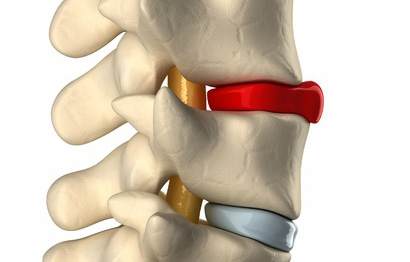
Do you have a disc bulge that is causing you incredible pain in your lower back?
Does your disc bulge give you sciatica or pain down your leg?
Have you wondered what’s going on in your lower back to cause all this pain?
In this issue of Bodi Empowerment, I go over what’s going on with your disc bulge, the cause of your pain and what kind of treatments are best for you. In other words, I act as a guide to help you decide what to do.
Disc herniations, or disc bulges occur when the disc that is found between vertebrae in the spine is damaged. Most of the time the damage occurs in stages.
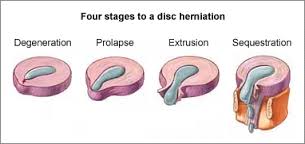
Here are the four stages of a disc herniation or disc bulge:
- Disc Bulge
- Disc Prolapse
- Disc Extrusion
- Disc Sequestration
Think of the disc as a flat hard onion with strawberry jelly inside. The jelly is the nucleus while the onion layers form circular layers of hard cartilage called the annulus.
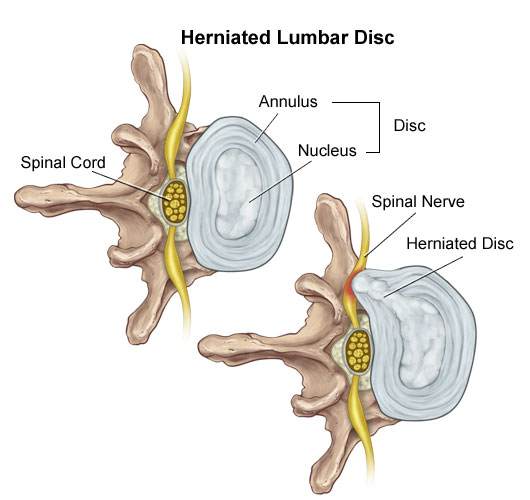
Disc Bulge
If you were to damage the annulus (onion) enough the disc gets to a point that when you bend forward, you pinch the front of the onion so it starts to bulge the onion at the back by pushing the nucleus (jelly) backwards.
This is called a disc bulge. For most of you, there is no pain but for some of you, there can be considerable lower back pain and even sciatica from this small disc bulge.
Disc Protrusion
A disc protrusion is like a disc bulge that comes out even more in one focused spot. The disc pushes out as if you had your finger inside a balloon and pushed out.
Most of the layers of the onion (annulus) have been damaged but the jelly (nucleus) is under considerable pressure. The jelly (nucleus) squeezes through the layers of the annulus (onion) with the few intact layers of the onion (annulus) and the PLL (posterior longitudinal ligament) holding the jelly from spilling out. The disc is still contained by the annulus and PLL ligament. ie the balloon hasn’t popped.
Disc Protrusions usually cause quite a bit of lower back pain and often times sciatica. Many of you, with disc protrusions, on the other hand, have absolutely no pain. There is no clear reason. A study found that 40% of people with no pain whatsoever had disc protrusion confirmed by MRI (Magnetic Resonance Imaging Machine) [1]
The trick is not to let your doctor diagnose you based on just an MRI. An MRI that shows a disc protrusion by itself is not a diagnosis. It’s what a normal person with no pain can have. Make sure there is other evidence!
Disc Extrusion
Disc Extrusion is a disc bulge so large that it breaks through the last layers of the onion (annulus) and the PLL ligament pushing into the area of the spinal cord. ie. The balloon has popped. If you have an extrusion you likely have a tremendous amount of pain leg pain and usually some lower back pain.
Surprisingly when a group of normal people with no pain were scanned with an MRI 18% were found to have disc extrusions (severe disc herniations). [1]
When you have a disc extrusion chances are the extrusion is likely causing your pain as it’s so large.
Disc Sequestration
Disc sequestration occurs when a piece of your jelly (nucleus) that breaks through the onion (annulus) and the PLL ligament has now broken off and moved away further into the spinal cord area. When you have a disc sequestration you have a tremendous amount of leg pain and some lower back pain.
Smaller Is Better: Disc Bulge
Disc Herniations or slipped discs are better if they are smaller, right? You will have less pain right? Yes except when they give you pain. Remember all those normal people with no pain with all kinds of slipped discs? They had disc bulges, disc protrusions, and disc extrusions and even disc sequestrations with no pain.
On the other hand, even with a small disc bulge, you can get a lot of pain and even sciatica with no pressure on the nerve. So smaller isn’t always better.
Bigger Is Better: Disc Bulge
Sometimes bigger is better. Most people like you with disc extrusion and sequestration have lots of pain. The fact is these painful extrusions while more painful usually shrink with time. It takes about a year but with the shrinking of the herniations, the pain does decrease.[2-5]
Disc Herniation: Disc Bulge Treatment
#1 Stop Aggravating Yourself
Half the problem why people don’t get better is that they continually aggravate their lower back and their slipped discs. Learning to lift properly, sit properly and even stand over the sink while brushing your teeth properly can help you avoid the pain.
Even Yoga exercises such as the downward dog can aggravate the lower back, Pilates and even your basic abdominal crunch have been shown by Dr Stuart McGill to increase the pressure in the disc beyond its safe limit.
If you want to find out how to stop aggravating your lower back, click the link below.
See Also: Slipped Discs: Best Self-Treatments To Help Your Lumbar Disc Herniation
#2 Exercise For Disc Herniations / Slipped Discs
For complete instructions on exercises for slipped discs click the link. Best Exercises For Your Slipped Disc
#3 Chiropractic Adjustments For Disc Bulge
A major research paper showed that people who have had lumbar disc herniations who have failed at least 3 months of medical management, including treatment with analgesics, lifestyle modification, physiotherapy, massage therapy, and/or acupuncture, should consider chiropractic spinal manipulative treatment, followed by surgery if unsuccessful. [6]
I would also add that I would try 3 different chiropractors as the competency level varies from person to person. Like any profession including medical doctors and physiotherapists, there are the good ones and bad ones.
See also: 6 Things You Should Look For In A Chiropractic Clinic
#4 Acupuncture For Disc Bulge
Acupuncture is helpful for Slipped Discs in the neck and the lower back.[7-8]
#5 Injections
In a study of two different groups getting treatment for lumbar disc herniations, the group getting chiropractic manipulation had 76.5% of the people improve while the group getting the nerve root injections improved by 62.7%.
After a month, the chiropractic spinal manipulation group had a 60% reduction in pain compared to the nerve root injection group, which had a 53% decrease in pain. Keep in mind the nerve root injection group seemed to be worse to start with compared to the spinal manipulation group.
See Also: Chiropractic Spinal Manipulation Vs. Nerve Root Injections for Lumbar Disc Herniations
Epidural injections are also helpful for lower back pain and the radiating pain down your leg.[8]
#6 Surgery
#1 Discectomy
There are two types of surgery available for slipped discs. Discectomy and spinal fusion. This surgery involves cutting out the piece of the disc that is protruding out and pushing on the spinal cord or nerve.
Discectomy is relatively simple compared to spinal fusion. You have a much better chance of success with discectomy if your MRI shows that your disc herniation is greater than 7 mm thick and correlates well with your neurological exam and nerve conduction studies.[9] If your lower back pain is greater than your leg pain discectomy will not likely work very well for you.[10]
#2 Spinal Fusion
Spinal Fusion removes the disc herniation, jelly (nucleus), and most of the annulus (onion). Bone from the pelvis is then transplanted where your disc was so that the two vertebrae become one.
What Treatment Should You Do?
You should do at least 3 months of therapy when you have a slipped disc before even considering surgery or injections. Start by not aggravating your lumbar disc. You need to modify how you bend forward, lift and even pick up your socks.
See Also: Disc Herniation: Best Self-Treatments To Help Your Lumbar Disc Herniation
If you have trouble sleeping at night you can take painkillers to help you get a better sleep. Don’t stay in bed though. When you have excruciating pain you should only have bed rest for a maximum of two days total.
Next, try chiropractic or physiotherapy with someone who also does acupuncture. Make sure it’s not with somebody who knows how to do 20 acupuncture points. Be patient with them as disc herniations can be difficult to deal with.
Attend regularly 3 times a week for at least a month. Make sure they change the treatments to find what works best for you. If they keep doing the same thing each visit but you are improving that is fine, but if you aren’t improving then it’s time to find a new chiropractor.
If you don’t get any better after a month change to a different chiropractor. I recommend trying 3 different chiropractors as different chiropractors have different training.
If you plateaued or haven’t improved at all then it’s time to get a nerve root injection or an epidural injection. Make sure it’s with a person that does this every day. An emergency room doctor or family physician only does this procedure once in a while. It’s better to get someone more experienced.
When conservative care has been completely exhausted then it’s time to consider surgery. Discectomy is more conservative than spinal fusion and recovery is much quicker. You should consider discectomy surgery if you have :
- Foot drop that is getting worse.
- Any other neurological symptoms that is getting worse like your reflexes, sensitivity
- Bowel or Bladder Symptoms (loss of your poo and pee function). : This is an emergency you should go to the hospital right away.
- If you have a disc protrusion or that is 8 mm or larger that correlates well with a neurological exam, and Nerve conduction tests.
- Leg pain is worse than your lower back pain.
Beware of the surgeon who wants to operate on a small disc bulge. There are too many unnecessary surgeries in the USA especially spinal fusion.
Spinal fusion is considered when your lower back pain is worse than your leg pain
Tell us what you think in the comments below and like us on Facebook. This Toronto Downtown Chiropractor will answer all questions in the comments section.
Research
1. Weishaupt D et al. “MRI of the lumbar spine: Prevalence of intervertebral disc extrusion and sequestration, nerve root compression and plate abnormalities, and osteoarthritis of the fact joints in Asymptomatic Volunteers.” Radiology – 1998; 209:661-666
2. Maigne JY, Rime B, Delignet B. Computed tomographic follow-up of 48 cases of nonoperatively treated lumbar intervertebral disc herniation. Spine 1992; 17:1071-1074.
3. Ikeda T, et al. Pathomechanism of spontaneous regression of the herniated lumbar disc: histologic and immunohistochemical study. J Spinal Disord 1996;9:136-140.
4. Ahn SH, Ahn MW, Byun WM. Effect of transligamentous extension of lumbar disc herniations and their regression in the clinical outcome of sciatica. Spine 2000; 25:475-480.
5. Komori H, Shinomiya K, Nakai O, et al. The natural history of herniated nucleus pulposus with radiculopathy. Spine 1996; 21:225-229.
Research
6. McMorland G et al.Manipulation or microdiskectomy for sciatica? A prospective randomized clinical study. Journal of Manipulative & Physiological Therapeutics 2010; 33: 576-584.
7. Wu, Yao-chi, Jun-feng Zhang, Yi-jun Sun, Cheng-fei Huang, Ping Shao, and Gui-zhen Liu. “Clinical study on electroacupuncture for cervical intervertebral disc herniation.” Journal of Acupuncture and Tuina Science 11, no. 6 (2013): 371-374. – See more at: http://www.healthcmi.com/Acupuncture-Continuing-Education-News/1249-acupuncture-found-superior-to-drug-for-neck-disc-pain#sthash.vD0pNepM.dpuf
8. Wang HeshanNon-Surgical Therapy For Prolapse of Lumbar Intervertebral Disc. The Journal of Traditional Chinese Medicine
9. Parr AT, Diwan S, Abdi S. Lumbar interlaminar epidural injections in managing chronic low back pain and lower extremity pain: a systematic review. Pain Physician 2009;12:163-188.
Research
10. Carragee EJ, et al “Clinical outcomes after lumbar discectomy for sciatica: The effects of fragment types and annular competence” J Bone Joint Surg Am – 2003; 85(1):102-108
11. McMorland G et al.Manipulation or microdiskectomy for sciatica? A prospective randomized clinical study. Journal of Manipulative & Physiological Therapeutics 2010; 33: 576-584.
Related Categories: Acupuncture, Back Pain, Disc Herniation, Imaging, Low Back Pain, Surgery

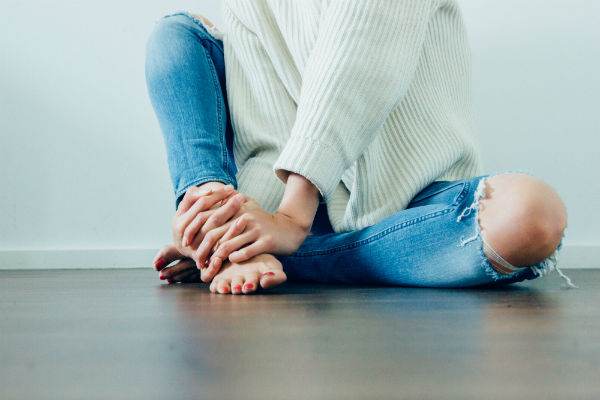
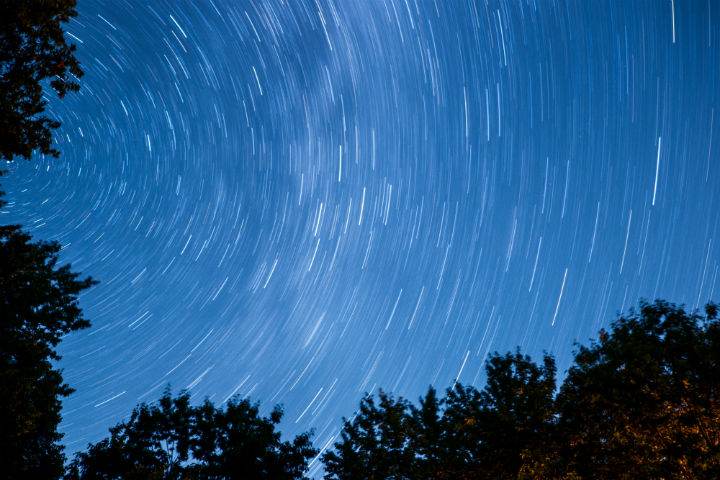
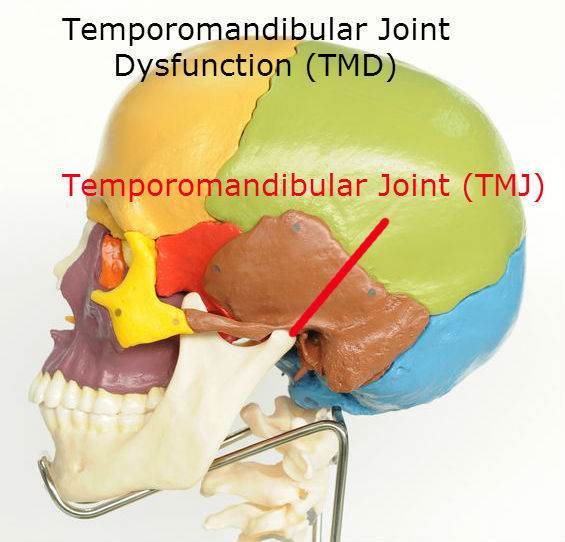
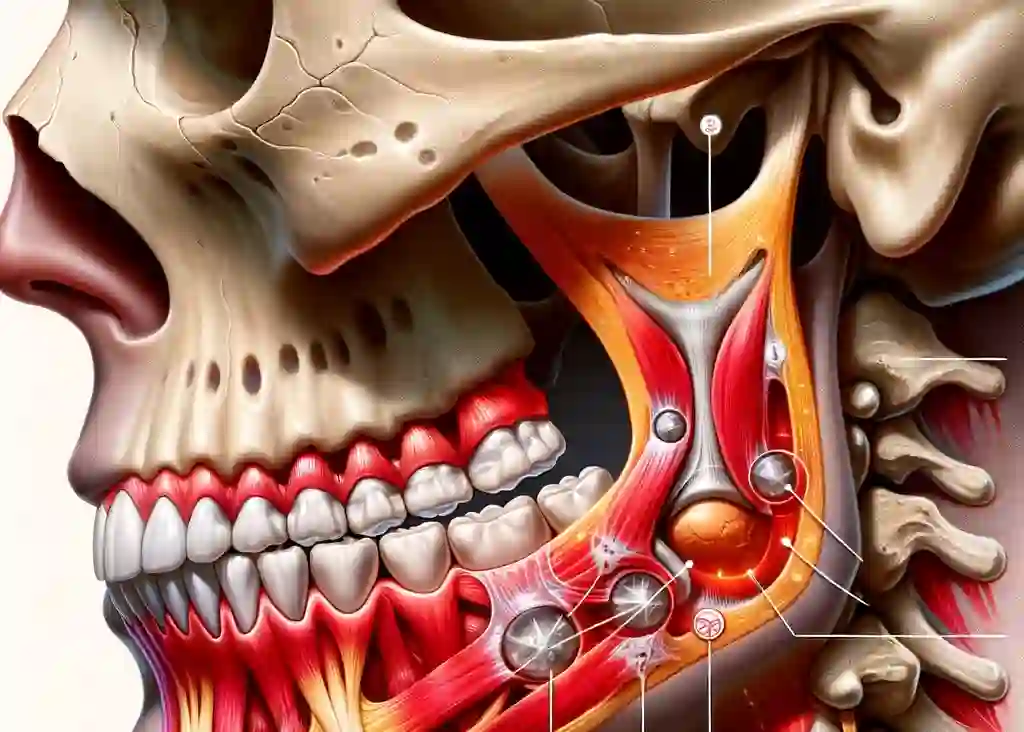
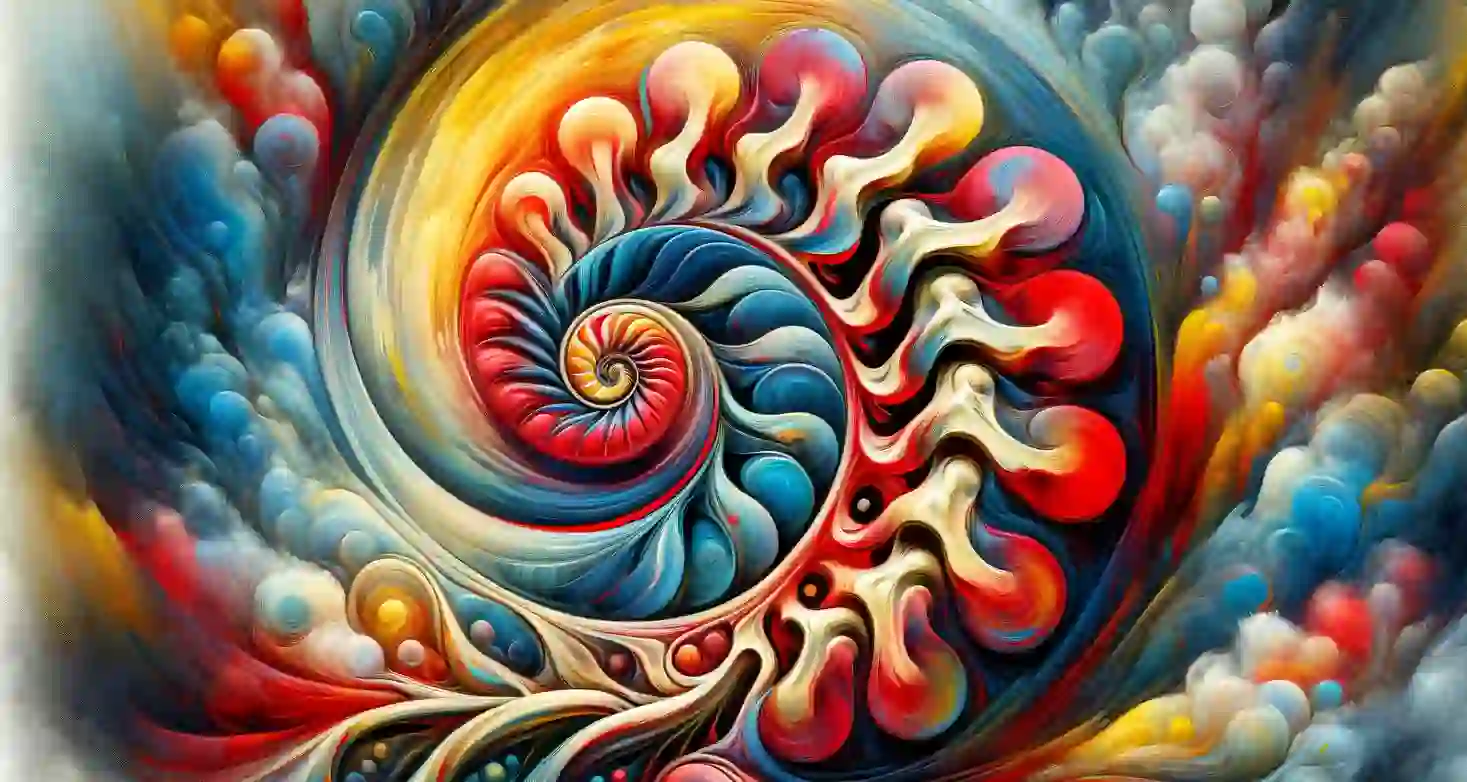
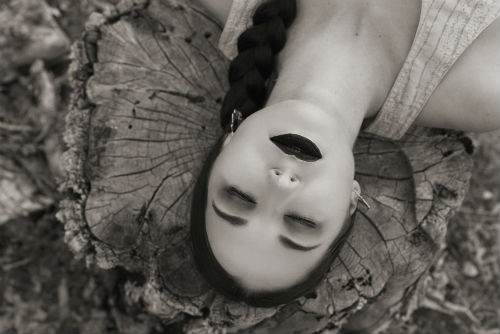
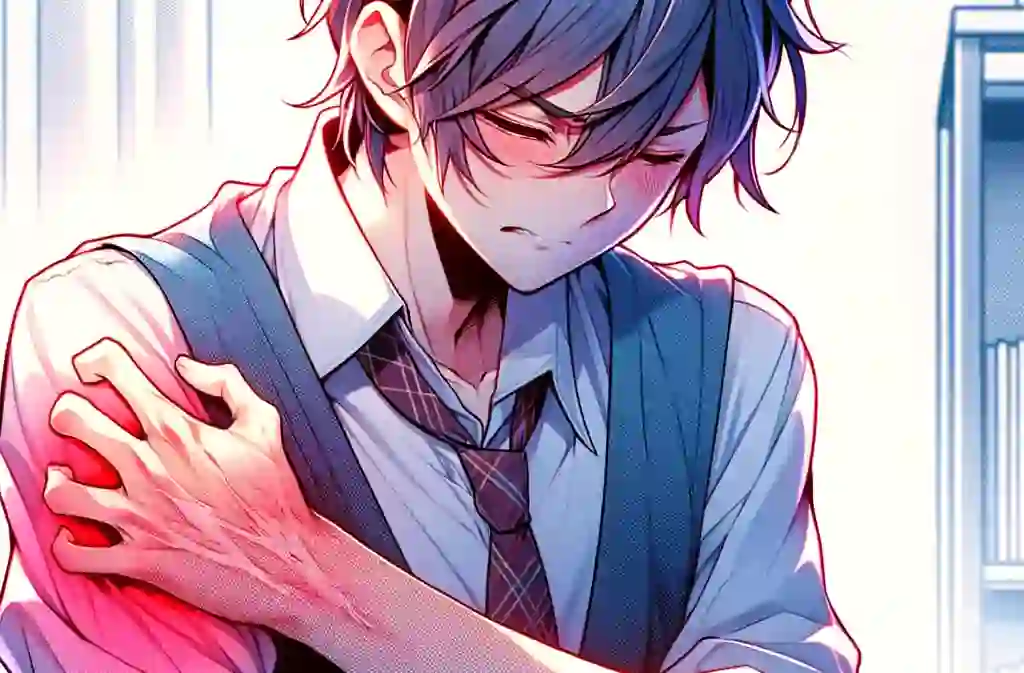
Hi Doctor,
I m 20 yrs old, i m currently pursuing engineering. It started with lower back pain so i went through X-ray scan. The results of x-ray were muscular spasm, reduced L4-L5 and L5-S1 disc spaces, L4 L5 canal stenosis. As the pain still existed after 1 month i went through MRI scan. The results of MRI were mild degeneration and mild diffuse posterior bulge with posterocentral-right paracentral extrusion of L4-L5 disc indenting the right traversing nerve roots, minimal posterior bulge of L3-4 disc.
Currently i am not able to walk fastly and after walking few kms i experiences pain in my right leg. Though the pain is slightly less than it was earlier as i have been doing physiotherapy since last month. After standing while seating on a chair my curvature becomes C in shape.
So Doctor there are several questions running through my mind as my diagnosing doctor told me this is a very horrifying case. So it’ll be very helpful and thankful of you if you would guide me through those confusions.
1-What are the chances that i’ll recover totally?
2-Does the extruded disc will heal itsealf or not?
3-Will i be able to run and play sports(outdoor) as i used to? (as my doc told me that i wont be able to do anything which i used to do earlier )
4- Can i join gym after recovering or after 6-7 months?
5-What precautions i’ll need to take even after recovering?
6- Can you suggest exercises for the same?
Kindly advice and guide me through this.
Author
Thanks for your questions Patient.
1. I can’t answer that as I haven’t examined you.
2. Extruded discs often get reabsorbed by the body after 6 months if the radiologist read it correctly.
3. Most people get back to sports.
4. You can join the gym again after you recover but you should stay away from heavy lifting and squats and deadlifts.
5. same as above
6. https://www.bodiempowerment.com/herniated-disc-part-2-the-best-exercises-for-your-herniated-disc/
All exercises should be supervised by a health professional. You can hurt yourself if you don’t.
Thanks Doctor, your exercise are very helpful. That exercises improved my agility and whole movement of my body. Now there is minimal/negligible pain in my lower back but my right calf still hurts sometimes. While walking if some pressure comes on my leg, suddenly my right calf starts paining. The pain is not too much but it feels like there is some burden on my leg.
For this i again consulted my doctor but he doesnt seems to be positive on my improvement. He still says if the problem persists we’ll need to do operation to take out that pathology.
Doctor can you suggest something more helpful regarding pain in my calf and overall improvement in posture.
Author
Thanks for your question “Patient”. Looks like you study physics and chemistry.
You need to ask yourself if there is something the doctor will gain if they send you for an operation when you are feeling better. If there is private for profit operations in your country than I would be very careful. Who would recommend an operation for a person with minimal pain in the lower back and leg pain sometimes which is not much of a burden?
Try massaging your own leg.
Hope that helps your possible disc herniation.
Hi Dr. I have lower back pain for last two months or maybe less. i previously used to face difficulty in tying up my laces and standing infront of a sink, right now its reduced a bit. I have slight feeling of sensation in legs but very much normal. The pain mostly is restricted to buttocks now. Not sure right or left or maybe both. I usually feel it while sitting for a longer duration. Sometimes its central, i’m kind of indecisive. But the pain isn’t a larger scale. Its bearable but i want to get rid of it. My MRI results show : 1) Circumferential LV4-5 disc bulge with mild exiting nerve roots impingement bilaterally. 2) Smooth posterior LV5-SV1 disc bulge with central annular tear and with mild exiting nerve roots impingement bilaterally. I have started to do exercise for two days or so with walk and jogging. The exercise i mostly do is touching my knees with the chest. I want to fully recover with this problem. Will I be able to? I have seen a doctor just a week ago I thought it would recover but since it didnt so I went to a hospital. I want to do physical exertion. Should I? Im just 22. THanks
Sorry complete report is left. 1) Circumferential LV4-5 disc bulge is noted causing anterior straightening of thecal sac with mild impingement of exiting nerve roots bilaterally. 2) Smooth posterior LV5-SV1 disc bulge with central annular tear is noted causing indentation of thecal sac and mild impingement of exiting nerve root.
Author
Thanks for your question Taha. Try these exercises.https://www.bodiempowerment.com/herniated-disc-part-2-the-best-exercises-for-your-herniated-disc/
If the exercise give you more pain or make any symptoms go further down the leg than you should stop the exercises. All exercises should be supervised by a health professional like a chirorpactor.
Hope that helps your disc herniation.
Dear Dr.Ken
Good day
Am 24 years old Male and i have lower back pain since last one year and after few treatment the pain not reduced .
after MRI i got result as POSTERIOR BULGE OF L4-L5 DISC CAUSING THECAL SAC INDENTATION AND MILD BILATERAL NEURAL FORAMINAL COMPROMISE .
Presently am doing only some exercise and walking and i can able to walk long .
kindly advice .
Author
Thanks for your question Anbu. Any treatment take more than a few treatments. You haven’t given it a chance. You should go for at least 12 sessions minimum. You can’t count any treatment you’ve done unless it was last week as most treatments are cumulative.
Also your disc might not be causing your pain as MRI don’t often correlate to pain. If a thorough exam is not done with correlation with the history than a proper diagnosis was not made.
Hope that helps your possible disc herniation.
Dear Dr.Ken
Good day
Thanks for your comment but still i have question to ask what is the problem that am getting the pain and is MRI report was wrong ? if so what is the next step to check and get the accurate result …as i am presently doing some stretching like cat and camel and etc .
Could you able to find out the problem what i have .
And before MRI i done Pelvic traction , IFT for a week and Prolotherapy at one time but there is no positive result , how i will throw out this pain from me , am eagerly waiting for that to happen .
And after MRI i have not gone for review should i go for review but doctor have advised me to do the stretching and tablet for 2 month .
Pls advice .
Many thanks for response and guidance .
shall await yours .
Author
Thanks for your question Anbu. What I am saying is that 30% of 30 year olds with no pain have disc herniations. MRIs never give you the full picture, they are very limited. For example MRI don’t tell you how much pressure is on your nerve when you are sitting or standing as you are doing the MRI while laying down.
Your MRI is not wrong it doesn’t give you the full picture as I stated above. You should do a follow-up with your doctor then decide if you should do exercises.
Hope that helps your lower back pain.
Dear Dr.Ken
Good day
Noted with many thanks , shall go for review with my doctor untill should i stop all the exercise and pls advice why am having this pain and how i got it , before affect this pain i regularly do jging , skipping and doing Gym and am having problem in nerves or in disc .
pls advice .
Author
Thanks for your question Anbu. You should review your case not just your MRI with your doctor or health professional. I can’t tell you your diagnosis as I don’t have enough information.
Hope that helps your possible disc herniation.
Hi. Dr. Ken
my father suffering from back lower pain from last 2 months . in MRI reports came
1. Grade-1 retrolisthesis of L1 over L2 and L5 over S1 vertebrae.
Diffuse disc bulges at L4-L5 and L5-S1 levels causing indentations Upon the thecal sac and along with moderate faceto-ligamentous hyperttophy, causing moderate narrowing of the bilateral neural foramina and severe canal stenosis .
please suggest me for treatment
satpal85bakain@gmail.com
Author
Thanks for your question Satpal. Your MRI results don’t mean that these are the cause of your pain. Many disc bulges and restrolisthesis even when much more severe don’t cause pain.
You can try these exercises to see if they help but your diagnosis is unclear as you have only said you have lower back pain.
https://www.bodiempowerment.com/herniated-disc-part-2-the-best-exercises-for-your-herniated-disc/
Any exercises can give you pain. You should be supervised by a health care practitioner. If you have increased pain or symptoms further down the leg like numbness, tingling or pain that you should stop the exercises, but I am sure your chiropractor or physio will let you know before that.
Hope that helps your possible slipped disc.
Thank you doctor for helping us. I have a disc herniation at L5/L4 9mm and L5/S1 6mm , both central . Most of my symptoms are burning sensation at the bottom of my both feet I guess from the s1 nerves. And also some pain at my toes from L5 never.
I did PT for a year now And had Epidural injection. The enjection help reducing the pain but not the burning sensation. I wonder from where this burning coming from and is surgery will be good for me as I am advised by my doctor to go fot micro discectomy. Walking is not a problem for me just setting.
Author
Thanks for your question Jay. Your MRI and symptoms seem to correlate which means that yes you are right the disc herniation is likely causing your pain. This isn’t the case many times if you read the 100 or more comments so far on this article.
The burning is coming from the pinched nerve. If you have pressure on another part of the nerve you will get weak muscles, with other parts you lose your reflexes. It just depends what part of the nerve is pinched. 100 different people with the S1 nerve being pinched can have 100 different symptoms. They can be similar but all are different.
If your MRI is a 9mm disc going out from the disc and pushing on the conus medullaris or cauda equina (part of the spinal cord) then you have quite a disc. If it is 9mm wide then it’s not that bad. From what you are saying I assume 9mm into the spinal cord area thus it would be putting quite a lot of pressure on the cauda equina.
In that case I would recommend surgery would be more successful. Either criteria for surgery are:
1. disc with >8mm with pressure on the cauda equina
2. Bowel or bladder problems.
3. Worsening neuromuscular symptoms like wasting of muscles. Look at the diameter of your thigh, leg etc.. with a fabric tape measure.
4. At least 6 months of therapy with no relief.
Surgery is an option but also trying another opinion is recommended.
Hope that helps your understanding of your slipped disc.
Sir,
I am an advocate and need your advise regarding a client’s case. The case of the client is that she was treated and had surgery for diffuse disc bulge. My client says that the pain started in January, 2013 and the surgery was conducted in November, 2013, i.e within a span of 10 months. The surgery treatment expenses were claimed by my client under the Insurance Policy but the Insurance Company rejected her claim saying that the condition of diffuse disc bulge is a long drawn degenerative process.
Now i need your advice regarding the issue whether diffuse disc bulge is always a long drawn degenerative process?
According to me, the condition of diffuse disc bulge is a degenerative process and may happen to every individual and it may also be a short term process.
Kindly advise.
Author
Thanks for your question Apurv. There are many causes for disc herniations, eg. trauma, falls, car accidents etc…
Hope that helps your case regarding the surgery for the diffuse disc bulge.
Dear Sir,
i have been diagnosed with problems stated as
1. L3-L4 disc bulge with posterior central extrusion and mild superior migration of 2.4cm (more towards right side) narrowing spinal canal and compressing thecal sac with crowding of nerve roots
2. L4-L5 disc bulge with left foraminal protrusion spinal canal and left neural foramen intending thecal sac and left exiting nerve root
lumber canal AP diameter at L3-L4 is 0.55 cms & L4-L5 is 0.55cms
is it compulsary to have surgery for this case?
kindly reply
thank you
Author
Thanks for your question Sudhakar. If you have no pain or symptoms why would you have surgery? If you have leg pain with bowel and bladder problems you need to. Surgery is not based on MRI it’s based on the person correlated with the MRI.
Hope that helps answer your question on disc bulges.
Dear Dr.Ken,
thank you for your fastest and hope giving response, it made me to get clarified further doubts on this issue.
2 years back, by the imbalance weight lift in gym i developed pain on the left hip and the pain was severe for a week and it was negligible over a period of time. i was not taking that serious and i was in my regular activities including sports acts such as swimming.when i stopped swimming and started playing shuttle (badminton) realized some tolerable pain on the left hip & hardly on the upper back thigh during my lecture hour in which i stand for 1Hr.
recently i got an another incident in which i lifted weight and developed severe pain on the right hip, in the same way it sustained for couple of weeks and reduced drastically. this time i experienced hip pain along with stiffness in back side of both legs.
now i dont have such intolerable pain no bowel and bladder problem. but if i had happen to stand in same posture for an hour i develop small pain in hip not in legs.
i sleep well, no constipation problems.
1. what is your advice?
2. how serious this issue?
3. if surgery is necessary, how long i can sustain without the surgery?
4. is it possible to recover with necessary exercise?
5. is the pelvic extraction exercise advisable?
6. if surgery essential is it possible to do by keyhole surgery?
7. will the bulged tissue compressing the nerve root grow after removal and result in same problem?
8. whether this is neuro issue or ortho issue, which expert will deal this problem?
9. is there any way the bulge will vanish (return to its position) by proper medicine?
sorry if the questions are silly.
thank you for your kind perusal and reply
Author
Thanks for your questions Suhakar.
1. It’s not clear what the problem is based on what you say. It’s likely a disc but it’s not fully clear as I didn’t examine you.
3. Always do conservative therapy first.
5. Never heard of a pelvic extraction exercise
7. Look at #1
8. Neither, you should get chiropractic or physical therapy.
9. Medication doesn’t put discs back and won’t in my lifetime.
Hope that helps your possible disc protrusion.
Dear Dr.Ken,
Sorry for not making the issue clear.
The MRI result of mine is posted in my first question.
in crisp, currently i don’t have any bowel or bladder issue.
when i stand or sit for an hour in same posture, i develop pain on lower back and transfer to buttock and no pain on legs.
it was the typo error as pelvic extraction, actually it is pelvic traction needed?
suggest me some physical therapy and exercise
thank you
Author
Thanks for your question Sudhakar. First any exercise can make you worse. You need to be supervised when doing the exercises.
https://www.bodiempowerment.com/herniated-disc-part-2-the-best-exercises-for-your-herniated-disc/
If the exercises increase the pain or symptoms go further down into the thigh including numbness, tingling or pain then you need to tell your therapist. This way you can stop the exercises.
It’s still not clear that the disc herniation is causing your pain as your pain and your MRI don’t correlate. Also 30% of 30 years with no pain have disc herniations when examined with an MRI. Remember these people have no pain. Just because it’s on MRI doesn’t mean it’s causing your pain. Just because your doctor tells you it’s an disc herniation doesn’t mean that it’s so.
Hope that helps your possible disc herniation.
Hi Dr. Ken! Hope you’re doing great. My mom is 58 years and has recently experiencing low back pain. Her MRI shows as follows: 1. POSTERIOR DISC BULGES WITH SPONDYLOSIS AND DISC DESICCATION CHANGES AT L4-5 AND L5-S1 LEVELS WITH ACCOMPANYING DISC ANNULAR FISSURE FORMATION AT L5-S1.
2. GRADE I SPONDYLOLISTHESIS AT L5-S1 LEVEL.
3. NO COMPRESSION DEFORMITY NOR SPINAL CANAL STENOSIS.
Her orthopedic doctor advised her to undergo physical therapy for 2 weeks. She hasn’t done PT yet because she was told by the therapist that she needs to undergo surgery after. She does not experience difficulty in bowel/bladder movement nor numbness in her legs. My mom doesn’t want surgery anymore because she underwent one due to cerebral aneurysym in 2013. She is 58 years old, she is taking Pregabalin 50 mg at night. I bought her a back support that she wears everyday, is it ok for her to wear it even at night? If she experiences pain in the lower back, she takes Ibuprofen to relieve it and apply hot compress on the affected area. Are there any other alernatives for her to get better? Hope to hear from you soon. Thank you!
Author
Thanks for your question Ivy. First your mom shouldn’t wear the back support all the time. It will prevent her using her muscles and decondition her lower back. When she takes it off she has a greater chance to get a more serious injury. The second this is that disc bulges, spondylosis (degeneration or osteoarthritis of the spine) or disc dessication (disc wear and tear) may or may not be causing the pain in the lower back. Just because you see it on MRI doesn’t mean that it’s causing the pain.
Also not sure why she is going for surgery, unless she has tried physical therapy for 3-6 months. I must be missing some vital piece of information such as pain in the the leg with weakness that is getting worse
Criteria for surgery are:
1. Bowel or Bladder loss of control eg. incontinence
2. Neuromuscular problem that is getting worse. eg. wasting of muscles, like drop foot that is getting worse
3. The disc herniation should be 8 mm or more for surgery to be successful.
4. Failed conservative therapy with at least 2 different chiropractors or physios. I’m partial to chiropractors.
Doesn’t sound like she fits in any of those criteria. Doesn’t sound like there are any symptoms in the legs. If that’s the case than I don’t see why there should be surgery.
My question is do you have a private and public health system and is this doctor on the private system. It makes a huge difference in recommendations.
You are right she is also at higher risk of complications if she already had surgery for cerebral aneurysm.
I would get a second opinion from a neurologist or chiropractor if I were you.
Hope that helps your moms lower back pain.
Hello Dr ken,
I hope youre doing well.
Im experiencing low back pain for two months now. I consulted a doctor and referred me to have an MRI recently. Result revealed that:
BROAD BASED DISC PROTUSION AT L3L4 CAUSING THECAL SAC INDENTATION AND MILD LEFT NEURAL FORAMINAL COMPROMISE. COMPOUNDING SAME LEVEL BILATERAL LIGAMENTUM FLAVUM HYPERTROPHY AND FACET JOINT ATHROPATHY NOTED.
How srious is these findings? Can it be relieved and treated by doing your exercises,? What exercises should i follow?
Thank you very much. Hope to hear from you also. More power!
Author
Thanks for your question Josephine. First The MRI notwithstanding the pain can be coming from other causes. The MRi has to match the exam or history. If they don’t treating the results of the MRI will get you nowhere.
Providing that the disc is the cause of your lower back pain then doing the exercsies here will help. https://www.bodiempowerment.com/herniated-disc-part-2-the-best-exercises-for-your-herniated-disc/
If the exercises give you more pain or increase any symptoms like numbness, tingling or pain further down into the buttock or the leg than you should stop the exercises. Your exercises should be supervised by a health professional as any exercises can make you worse.
Hope that helps your disc herniation.
Hello Doctor Ken,
First I want to say I have had a bad lower back since the age of 15, I have been through rehab, shots, all kinds of tests well since I am almost 55 you can imagine how much I have done. I would say the last two years I have had loss of bladder control and bowel control. I just had a cat scan done that says L4-L5 circumferential bulging of the disc. A superimposed central protrusion type disc herniation measuring 7 mm from posterior margin of the annulus is noted. Mild central canal stenosis contributing by ligamentum flavum hypertrophy. Foramina are patent.
L5-S1 broad-based disc bulge/osteophyte complex is noted without focal disc herniation
Impression Broad-based central disc protrusion at L4-L5 is noted measuring 7 mm from the posterior margin of the annulus compressing the thecal sac.
I have had sciatica pain for years, my lower back is very tender, I have a hard time walking without a walking stick. I would say the last 3 months the incontinence has gotten a lot worse. I had an episode one day that I never felt before, usual back pain got worse, but it went down into both of my hips and all the way down both legs and into both feet, afterwards I started having regular accidents. I have not had that type of pain again but I still have incontinence, I try to do the kegal exercises but it hurts my lower back, and I have pain in my upper legs like I have climbed 100 stairs when I barely do anything, also my ankles hurt but are not swollen. Please help. Hope I have covered everything.
Thank you
Connie
Author
Thanks for your question Connie. This is an emergency situation when you lose bowel or bladder control. You need to go to the ER. 3 months of incontinence that’s worse is definitely something exercises will no help.
Hope you find someone that will take care of your disc herniation.
Thanks for your help.
Surely I will practice these exercises. Do I need any sort of physiotherapy or only exrecises and medicines will work out in my case.
Author
Thanks for your question Neha. The exercises should be supervised so as you are in India with no chiropractors or very few than you should see a physiotherapist.
Hope that helps your lower back.
Hello Doc ken,
I hope you are doing well.
I have been feeling backache since 4 months.i went to several docters but noone could not recognise my disease as I have 2 mm stone as well in my right kidney.i cant not walk more than 15 minute as i feel acute pain in my back and left side.every doc used to say that I m feeling pain due to stone but before one week I got MRI done and it highlights below impression
1.Diffuse disc bulge at L2-3 level indenting the thecal sac.
2.diffuse bulge at L5-s1 level effecting anterior epidural fat.
Please let me know if it is worst condition or mild as its been 4 months only since I got married. My married life is becoming very disturbing. I want your help and want to live a normal life.
Author
Thanks for your question Neha. Keep in mind that diagnosis by MRI while it may be correct it may be an incidental finding. Your doctor or health practitioner should do a thorough history and examination. Just as they found the disc by accident. It doesn’t mean they are causing your pain. Lots of people have this sort of MRI with no pain.
Having said that it seems more likely to be coming from the back but the information I have is very limited.
Try these exercises. https://www.bodiempowerment.com/herniated-disc-part-2-the-best-exercises-for-your-herniated-disc/
If they help great. Keep in mind any exercises can make you worse. Make sure the exercises are supervised. You know you are getting worse if the pain increases or you get pain, numbness, tingling further down into the buttock or the leg.
Hope that helps your possible slipped disc.
Hello Dr Ken,
Thank you for all the help and support you are providing, I am a 29 year old female, 20 days back I was riding my scooter & due to a pathhole on the way I got shock on my back and since then I am having lower back pain. I am facing a pinch/needle press kind of thing in my right hip and pain floating to the bottom of my leg (with stretched foot). Initially I did sciatica pain exercises for one week but didn’t helped much and from last 10 days I am taking total bed rest with heat therapy. Currently my condition is if i am sleeping on hard surface then I feel no pain but if I standup/walk for more than 15 min pain starts again and while seating if I wear lower back belt then I feel ok for 2 to 3 hours. I had MRI and the report says-
** Partial annular tear with diffuse posterior annular bulge at L5-s1 level causing indentation over anterior thecal sac with partial effacement of bilateral lateral recesses**
Please guide me which exercises should I do and which not.
With your expertise advise.
Thankyou for your help.
Author
Thanks for your question Deep. You should try these exercises. https://www.bodiempowerment.com/herniated-disc-part-2-the-best-exercises-for-your-herniated-disc/
If the exercises give you more pain or increase any symptoms further down the leg like numbness, tingling, or pain than you should stop the exercises.
Dear Dr.ken
This happens 2yrs back after heavy weight lifting.As i am athlete & sports person,so i thought it as normal,but now as i have done MRI the report say
1-Diffuse bulges of L2-3 & L3-4 intervertebral discs cause slight anterior thecal sac indentation.
2-Desiccation,diffuse bulge & posterocentral extrusion of L4-5 intervertebral disc causes anterior thecal sac indentation & mild bilateral lateral canal-neural foraminal narrowing with contact of bilateral L5 traversing nerve roots.
Your suggestion can give my life back please help.
I have pain only on left side of spine at 2-3 finger distance,my body most the time feel tiredness.
Please help me out.
Author
Thanks for your question Laviesh. Try these exercises. https://www.bodiempowerment.com/herniated-disc-part-2-the-best-exercises-for-your-herniated-disc/
If the exercises give you more pain or increase symptoms down the leg like numbness or tinging or pain then you should stop.
Keep in mind a diagnosis should be made before an MRI. Too many doctors say its on the MRI so that’s your diagnosis. Most disc herniations don’t cause pain. In fact more than 30% of 30 year olds with no pain have disc herniations. Did your doctor diagnose you properly?
Hope that helps your possible disc herniation.
Dear Dr. Ken,
I have been feeling lower back pain since last 5-6 months.
I got my MRI report done today and below is what it highlights. Could you pls explain me what it means (how bad is tht basically) and what can be the possible treatment options
Lumbar lordosis is attenuated (muscle spasm).
Mild compression of opposing end plates of lumbar vertebrae (kindly rule out vitamin D deficiency / osteopenia).
Minimal disco-osteophytic bulge at L4-L5 and L5-S1 levels indenting the thecal sac without nerve root compression.
T2W sagittal screening through rest of the spine shows minimal central bulge at C3-C4 to C6-C7 levels indenting the anterior subarachnoid space. STIR coronal sections through sacro-iliac joints show no obvious abnormality.
Best regards,
Deepak
Author
Thanks for your question Deepak.
1. Lumbar lordosis is attenuated. The curve in your lower back has flattened out.
2. Compression of end plates. Your bone density is decreased or you had a fall that caused your vertebrae to have a microfracture. ( Many people have this)
3. A disc bulge is compressing on your spinal cord or rather the remnants of the spinal cord. Your spinal cord ends at L1 or L2. There are nerves still going further down. These nerves are being pinched.
4.Disc bulge in the neck pushing on the covering of the spinal cord.
Hope that helps your understanding of disc herniations.
Hi Dr Ken!
Appreciate the wonderful work that you are doing. Please help me too. Im 39 years male.
Lower back pain from 1 year. MRI findings: exaggerated lumbar lordosis noted: possible postural. Lumbarization of S1 vertebra noted. Disc bulge noted at l5-S1 causing indentation over thecal sac, bilateral lateral recess narrowing with mild bilateral neural compromise.
My ortho informed that this is not a big issue and suggested physiotherapy. Unfortunatly i could not get the physio done.its 4 months now. My back aches like hell now. Please help. Also make me aware of my condition.
Thank you Regards,
Shree
Author
Thanks for your question Shree. Try these exercises. https://www.bodiempowerment.com/herniated-disc-part-2-the-best-exercises-for-your-herniated-disc/
Like any exercises they can make you worse. If the pain increases or the symptoms like tingling, numbness or pain go further down the leg you should stop right away.
Hope that helps.
Hello Doctor,
I’m Jaya from Southern India. I am a L5-S1 Disk Bulge recovered patient(got recovered by time and exercise you suggested). Currently I don’t have any pain when I do anything except I have light pain when I go on a bumpy car ride. (not long just near by for simple shopping or other stuff).
Me and my husband are planning on a 600 km 10 hour ride to a hill station. Need advice from you doctor on what all precautions I need to take to have a smooth journey.
Thanking you,
Jaya
Author
Thanks for your question. You should roll up a towel to the size of your forearm and tape it on either end. Put this in the arch of your back to keep your posture. This will keep the pain from being aggravated as much. As drive slower to avoid the bumps.
Hope that helps.
1. Lambar spine shows straightening of lordotic curve.
2. Minimul disc bulge is noted causing thecal sac indentation with bilateral neoral forminal narrowing and corresponding nerve roots compression.
Which exercise should i do?
Thanks in advance
Author
Thanks for your question Shimul. You really shouldn’t do exercises based on an MRI. I have to make too many assumptions.
1. That you have back pain.
2. You have buttock, thigh and possibly leg pain
3. That the MRI corresponds to your pain
Keep in mind 30% of 30 year olds and 60% of 60 year olds have disc herniations. Your pain if you have any might not be related to the MRI you talk about.
I can’t give you any recommendations based on what you have written.
Hi Doctor,Hope you are doing good.
Can you Help me with the exercises and the diet to be followed.
My findings from the MRI are
1.Lumbar Lordosis is reduced
2.Mild disc dessication noted at L4-L5 and L5-S1.
3.L3-L4 Disc : Mild disc bulge noted causing anterior Thecal sac indentation and mild bilateral neural foraminal narrowing with no significant exiting/traversing root compression.No central canal stenosis seen.
4.L4-L5 Disc : Diffuse annular disc bulge with central disc protrusion noted causing anterior thecal sac indentation and moderate bilateral neural foraminal narrowing with compression over exiting/traversing nerve roots.spinal canal diameter is 13.4mm.
5.L5-S1 Disc :Diffuse annular disc bulge with central and right foraminal disc protrusion noted causing anterior thecal sac indentation and moderate bilateral neural foraminal narroing (right>left) with compression over right existing nerve roots.Spinal diameter is 11.2mm.
Remaining findings are normal.
Author
Thanks for your question Blue (Cyan). Try these exercises. https://www.bodiempowerment.com/herniated-disc-part-2-the-best-exercises-for-your-herniated-disc/
If the exercises give you increased pain or increase any symptoms further down into the buttock or leg than you should stop the exercises. Any symptoms means numbness, tingling or pain.
Hope that helps your disc herniation.
Thanks for the reply,Dr Ken.Sorry to trouble you with more questions but can you please help me with suggestions as to how many hours a day should I do these exercises and at what time of the day and how many days will it take for the pain to cure after consistent exercise?
Author
Thanks for the question Cyan. You should do the exercises 3-4 times a day. You should try the cobra first thing in the morning after doing the sphinx. As for when there will be a cure. You will likely get out of pain but a cure is another story.
Hope that helps your disc herniations.
Thank you so much doc tomorrow . For your quick response I shall keep u update with the report and doctor can u suggest any medications for my lateral disc herination should I take medicines along with these exercises ? If yes, can you suggest me that because I am suffering from too much pain in my left leg.